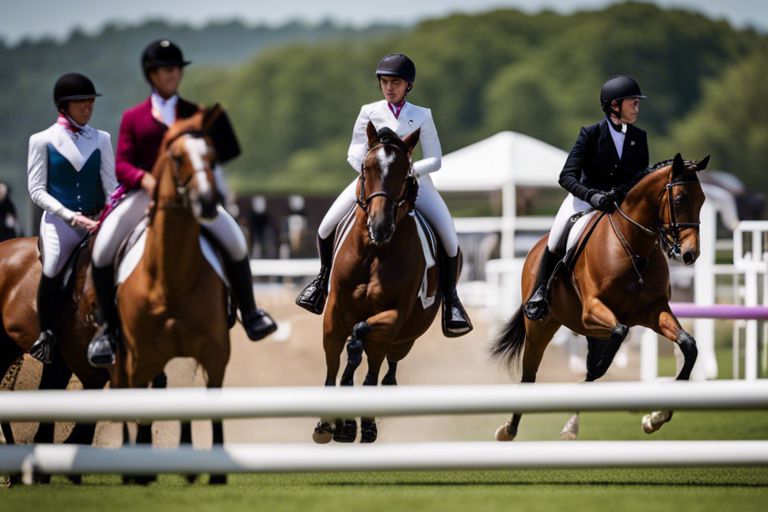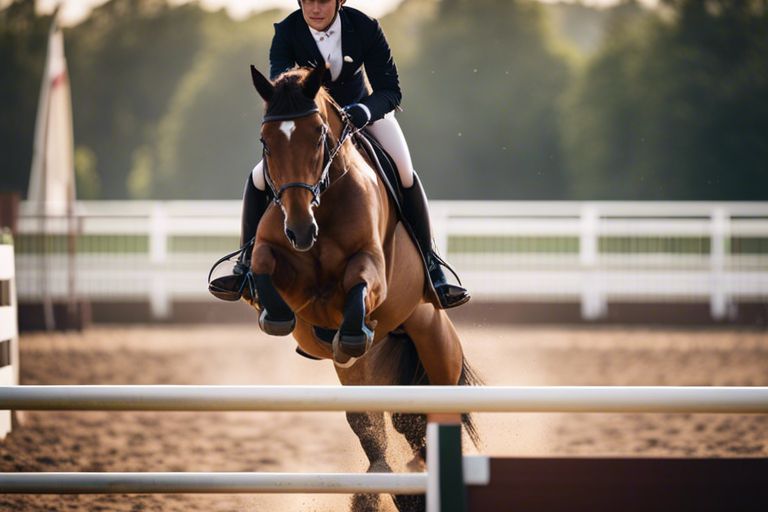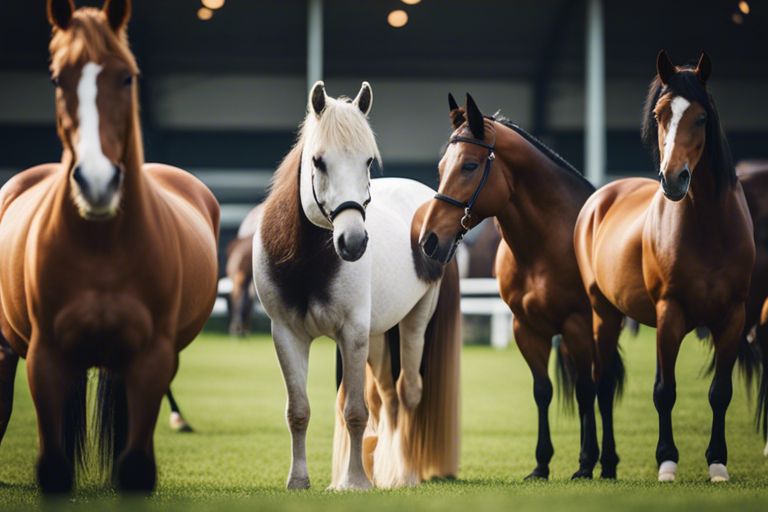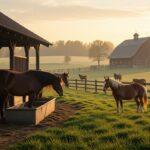It is vital for equestrians to have a solid understanding of the various riding styles and disciplines available when working with horses. From Western to English riding, dressage to show jumping, each style offers a unique set of skills and techniques to master. In this blog post, we will explore into the diverse world of equestrian sports and explore the different disciplines that riders can pursue to enhance their horsemanship abilities. Whether you are a beginner looking to try out a new style or an experienced rider seeking to broaden your riding horizons, this guide will provide valuable insights into the exciting world of horseback riding.

Western Riding Style
Overview of Western Riding
To understand Western riding, it is important to recognize its roots in the American West and the working techniques used by cowboys on ranches. Western riding is known for its relaxed and leisurely pace, with a focus on comfort for both horse and rider.
Key Disciplines Within Western Riding
For those interested in Western riding, there are several key disciplines to explore. These include reining, cutting, barrel racing, and Western pleasure. Each discipline showcases the unique skills and abilities of both horse and rider, emphasizing precision, agility, and teamwork.
Overview
Reining is often considered the flagship discipline of Western riding, where horse and rider perform intricate patterns with speed and precision. Cutting involves separating a single cow from a herd, showcasing a horse’s natural cow sense and agility. Barrel racing is a fast-paced event where horse and rider navigate a cloverleaf pattern around barrels against the clock. Western pleasure, on the other hand, focuses on the horse’s smooth gaits, calm demeanor, and overall manners in the show ring.
English Riding Style
Differences Between English and Western Riding
On comparing English and Western riding styles, one notable difference lies in the equipment used. English riders typically use a lighter saddle with minimal or no horn, while Western riders use a heavier saddle with a prominent horn. The riding posture also varies, with English riders adopting a more upright and closer-contact position with the horse, while Western riders often sit deeper in the saddle with a relaxed posture.
Main Disciplines in English Riding
English riding encompasses various disciplines, each with its own set of skills and techniques. Some of the main disciplines in English riding include dressage, show jumping, eventing, and hunter/jumper. Each discipline requires a unique combination of rider and horse athleticism, precision, and coordination to excel in competitions.
Dressage emphasizes the harmonious development of horse and rider through precise movements, while show jumping tests the horse and rider’s ability to navigate a course of obstacles with speed and accuracy. Eventing combines dressage, cross-country jumping, and show jumping in a multi-phase competition, while hunter/jumper focuses on the horse’s form and technique over fences.

Other Equestrian Disciplines
Endurance Riding
Not all equestrian disciplines take place in an arena. Endurance riding is a unique sport that tests the stamina and endurance of both horse and rider over long distances. Competitors cover varying terrains and must complete the course within a set time frame. It requires a special bond between the rider and their mount, as they navigate challenging trails and harsh conditions.
Vaulting
One of the most visually stunning equestrian disciplines is vaulting, which combines gymnastics and dance on horseback. Vaulters perform intricate maneuvers, such as handstands and flips, while the horse moves in a circle on a longe line. This demanding sport requires balance, strength, and coordination from the vaulter, as well as a well-trained and steady horse.
Polo
Another exciting equestrian discipline is polo, a fast-paced team sport that involves riders on horseback hitting a small ball with mallets. The objective is to score goals against the opposing team. Polo requires skilled horsemanship, strategic thinking, and teamwork. It is often referred to as the “Sport of Kings” due to its prestigious history and elite player base.
With roots in ancient Persia and a rich tradition spanning centuries, polo has evolved into a thrilling modern sport played at high speeds. Players must have excellent control over their mounts and precise mallet skills to excel in this challenging yet rewarding discipline.

Choosing the Right Discipline
Factors to Consider
Keep in mind several factors when choosing a riding discipline for you and your horse. Consider your riding experience, the horse’s temperament and physical abilities, your personal interests, and the availability of training facilities and instructors. Making an informed decision based on these factors can lead to a fulfilling partnership with your horse.
- Riding experience
- Horse’s temperament and physical abilities
- Personal interests
- Availability of training facilities and instructors
Perceiving the strengths and weaknesses of both you and your horse is crucial in finding the right discipline that suits both of you.
Aligning Rider Goals with Horse Capabilities
Choosing the right discipline involves aligning your rider goals with your horse’s capabilities. An understanding of your horse’s strengths and weaknesses can help you set realistic goals that both you and your horse can work towards. Whether you aim for competition success, leisurely trail rides, or personal development, it’s imperative to ensure that your horse is physically and mentally capable of meeting your aspirations.
Capabilities play a significant role in determining the suitable discipline for you and your horse. Assessing your horse’s strengths and limitations will guide you in selecting the most appropriate training and riding style that aligns with both of your abilities.
Conclusion
With this in mind, exploring different riding styles and disciplines for horses can greatly benefit both the horse and the rider. By trying out various disciplines such as dressage, show jumping, trail riding, or western riding, individuals can improve their horsemanship skills, develop a deeper connection with their horse, and discover new ways to challenge themselves and their equine partner. Each discipline offers unique challenges and rewards, allowing riders to expand their knowledge and experience within the equestrian world. Whether it’s the precision and elegance of dressage or the adrenaline rush of jumping, there is a riding style for every horse and rider duo to enjoy and excel in.
FAQ
Q: What are some popular riding styles and disciplines for horses?
A: Some popular riding styles and disciplines for horses include dressage, show jumping, eventing, western pleasure, trail riding, and endurance riding.
Q: What is dressage and how is it different from other riding styles?
A: Dressage is a highly skilled form of riding where horse and rider perform a series of predetermined movements. It focuses on precision, elegance, and harmony between horse and rider, setting it apart from other riding styles.
Q: What is show jumping and what are its key characteristics?
A: Show jumping is a competitive equestrian event where horse and rider navigate a series of jumps in an arena. It requires speed, agility, and accuracy, with the goal of completing the course with the fewest faults.
Q: How does eventing differ from other equestrian disciplines?
A: Eventing combines dressage, show jumping, and cross country jumping into one comprehensive competition. It tests the horse and rider’s versatility, skill, and athleticism across different disciplines.
Q: What are the benefits of exploring different riding styles and disciplines for horses?
A: Exploring different riding styles and disciplines can help improve a horse’s training, physical fitness, and mental stimulation. It can also broaden a rider’s skills, knowledge, and overall horsemanship experience.











